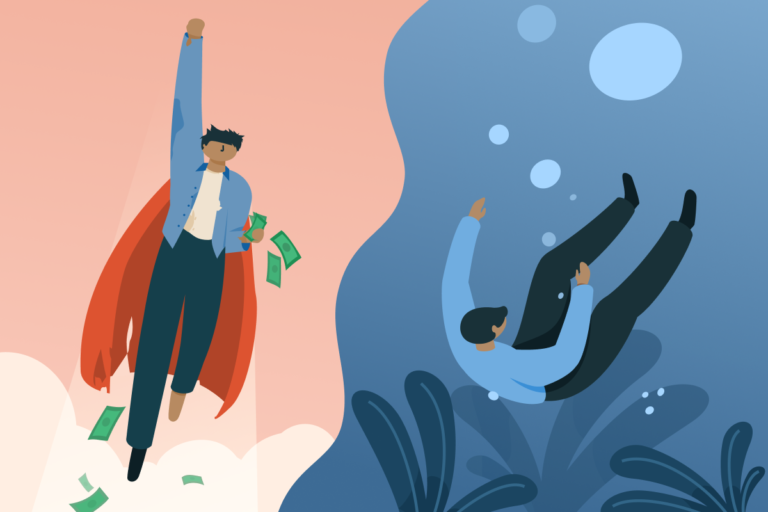Bipolar disorder, or manic-depressive illness, is a cluster of disorders described by the nearness of articulated high-energy stages known as manic episodes. Ordinarily, strange shifts in the state of mind and energy levels show in expanded activity levels and impair the capacity to work. The impairment caused by bipolar disorder can be serious and can bring about serious problems in one’s connections, poor occupational life and/or school life, and even suicide.
There are a few unique types of bipolar disorder.
- Bipolar I issue alludes to a condition wherein individual encounters a manic episode for at least one week and could possibly also experience a depressive episode. The manic episode side effects might be serious to such an extent that hospitalization is required.
- Bipolar II alludes to the presence of current or past hypomanic episode, which is a marginally less serious type of mania enduring at least four sequential days, as well as a depressive episode in the past or in the present.
- Cyclothymic disorder, or cyclothymia, alludes to repeating hypomanic and depressive state of mind, shifting, at any rate, over at least a two-year time span in adults.
An expected 2 to 3% of the adult population of the world experiences this condition. The figures in India are exceptionally scrappy due to poor testing and diagnosis. Notwithstanding, one could securely expect that a great many Indians are patients of Bipolar Disorder.
Facts
- Researches have shown that this condition happens with equivalent recurrence among guys and females.
- The median age of developing bipolar disorder is 25 years. However, in some cases, this disorder may start in childhood or at any other time in life.
- Bipolar is a chronic condition and requires lifelong treatment. It is seen that 90 per cent of individuals who have a solitary manic episode proceed to have repetitive episodes of mania or depression.
In India, Bipolar India is doing great work in this context and have multiple resources that can help one understand this disorder in-depth as well as it’s treatment facilities in India as well as around the globe.
Symptoms of Manic Episode
According to the DSM-5, a manic episode is manifest in an excessively euphoric, expansive, or irritable mood for most of a day, every day for at least a week, and is accompanied by abnormally and persistently increased activity and energy. In addition, three (or four if the dominant mood is irritability) of the following signs must be present
- Inflated self-esteem or grandiosity, including unrealistic beliefs in one’s abilities and powers
- Decreased need for sleep
- Unusual talkativeness or pressure to keep talking
- Flight of ideas or the sense that thoughts are racing
- Distractibility
- Increased goal-directed activity, such as work or school projects, or purposeless activity (psychomotor agitation)
- Involvement in activities that are likely to have painful consequences, such as buying sprees, sexual indiscretions, poor business investments.
Symptoms of Depressive Episode
Bipolar disorders are typically marked by the occurrence of at least one depressive episode. A depressive episode is characterized by depressed mood, or loss of pleasure or interest, or feelings of hopelessness for at least two weeks. According to the DSM-5, at least five of the following symptoms are also present:
- The sad, anxious, or empty mood is present most of the day, every day
- Loss of interest or pleasure in all or most activities is present most of the day, every day
- Unintended weight gain or loss
- Insomnia or excessive sleep
- Observable restlessness (psychomotor agitation) or slowing down (psychomotor retardation)
- Fatigue of less of energy nearly every day
- Feelings of guilt or worthlessness
- Diminished ability to concentrate, or indecisiveness
- Recurrent thoughts of death or suicide, or suicide attempts
Sometimes, severe episodes of mania or depression include symptoms of psychosis. Common psychotic symptoms are hallucinations (hearing, seeing, or otherwise sensing the presence of things not actually there) and delusions (false, strongly held beliefs not influenced by logical reasoning or explained by a person’s usual cultural concepts). Psychotic symptoms in bipolar disorder tend to reflect the extreme mood state at the time. For example, delusions of grandiosity, such as believing one is the president or has special powers or wealth, may occur during mania; delusions of guilt or worthlessness, such as believing that one is ruined and penniless or has committed some terrible crime, may appear during depression.
Treatment
Mood stabilizers along with antidepressants are commonly used in the treatment of bipolar disorder. Psychotherapy, Cognitive Behavioural Therapy, Family and Group therapy are psychological interventions that are also used in the treatment of bipolar disorder. Psychotherapy along with medications is the go-to method of treating this disorder. However, one has to remember that this is a lifelong condition and can keep making appearances in one’s life.
Sources: https://www.psychologytoday.com/us/basics/dsm-1Demystifying Bipolar Disorderhttps://www.ncbi.nlm.nih.gov/pmc/articles/PMC4536930/




3 thoughts on “Understanding Bipolar Disorder”
Pingback: My Story with Bipolar Disorder in India ft. Mr.Tushar Luthra
Pingback: MHT Podcast | Survivor Series | Thriving with Bipolar Disorder with Mr.Tushar Raj Luthra | Mental Health Today
Pingback: MHT Article | Survivor Series | Thriving with Bipolar Disorder by Mr.Tushar Raj Luthra | Mental Health Today